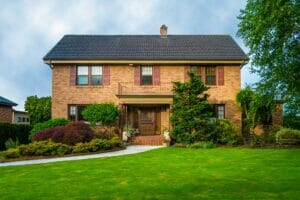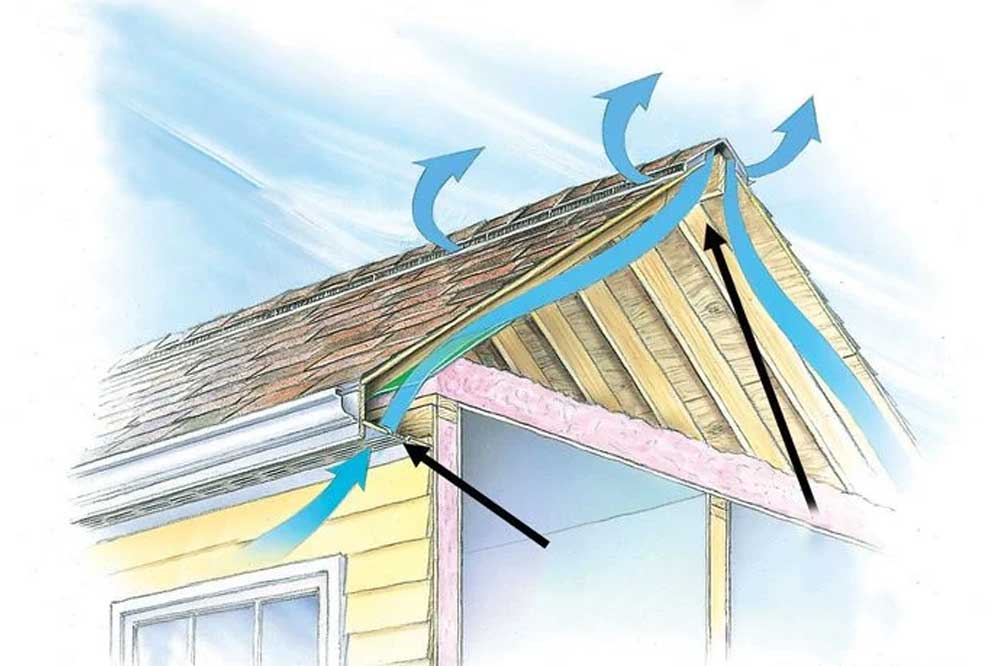For the majority of homes, the roof serves as the biggest form of protection. Roof vents form the base of a home’s attic ventilation system, helping it breathe while preventing roof system damage year-round. That’s why it’s important to understand how the various components work together to create a balanced, effective attic ventilation system. Read on to learn more about the impact that proper attic ventilation may have on your roof.

Prevents Condensation, Mold, and Rot
One of the most important aspects of proper roof ventilation is to help prevent condensation, which ultimately leads to mold and rot. Your home produces a lot more moisture than you think. Laundry, showers and bathing, cooking, and more all produce warm, damp air inside the living space of your home. This moisture gravitates upwards to your home’s ceilings, and if a vapor barrier is not in place, it eventually lands in the attic. If a cool surface, like the underside of your roof, is reached by the warm air, it will condense. The condensation caused by this “trapping” of air can create an unhealthy environment prone to the biological growth of mold and mildew. Properly ventilating your roof and attic space keeps your insulation dry and prevents these condensation-caused damages.
Increases Energy Efficiency
Ensuring you have proper attic and roof ventilation helps to reduce your home’s cooling costs by allowing heat to escape. As the temperatures outside begin to rise, the temperature inside your home does too. If you do not have proper ventilation, the heat will be trapped inside your home’s attic, causing your air conditioning to work harder. If proper ventilation is in place, it can lower both your home’s cooling and operating costs. Another way to increase your home’s energy efficiency is by installing a cool roof. A cool roof system will create a higher solar reflectance and thermal emittance compared to other standard roofing materials. These metal roofing systems are designed to absorb less heat, therefore even further increasing your home’s energy efficiency. Combined with proper ventilation, you can lower your cooling costs.
Increases Roof’s Lifespan
Not adequately ventilating your roof and attic can dramatically reduce the lifespan of your roof. As we mentioned, condensation, rot, and mold can be a result. A non-ventilated roof can also cause extremely hot attics, where the heat builds up and eventually causes damage to the wood framing, rafters, underlayment, and more. Ensuring your roof is evenly and properly ventilated helps that air to escape and extends the lifetime of your roofing system.
Reduces Indoor Temperature Extremes
If you’ve ever walked upstairs and felt a drastic change in temperature, it may be a result of poorly or not ventilated roofing. Indoor temperature extremes can be avoided with proper ventilation. It allows hot air to escape and cool air to enter the space. This can also help prevent super-heated attics, which can also impact your heating and cooling costs. Overall, ensuring proper ventilation will help your home be more comfortable during the entire year.
Prevents Ice Damming
If you live in a climate where snow and ice occur, having proper attic ventilation minimizes your risk of experiencing damaging ice dams. Ice dams are typically caused by warm air reaching the roof deck, which then results in the snow on your roof melting. This melted snow can run down your roof and refreeze over the home’s overhangs, forming ice dams. Proper ventilation will do two things to help prevent these potentially harmful ice dams. It will direct the warm air from your living space to the peak of your roof and then outdoors. Additionally, it will keep the attic close to the same temperature outside, therefore preventing melting snow.
If you’re ready to make sure your Jacksonville home has the proper ventilation in Jacksonville needed to keep your roof in top shape, let us help! Contact the expert team at Elo Roofing in Jacksonville today for a free estimate.


